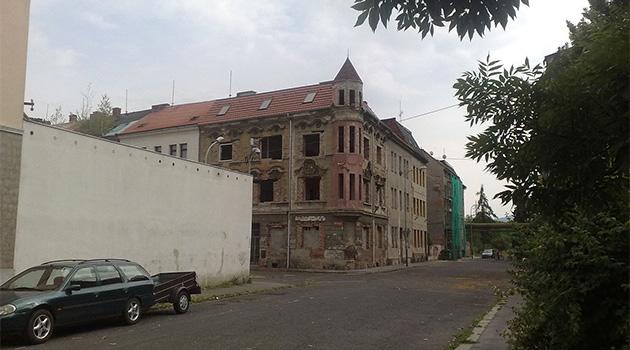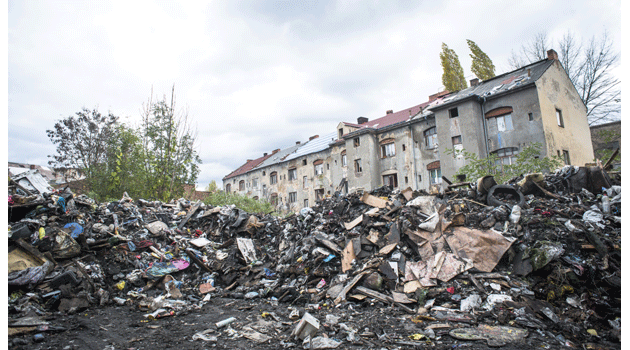Czech Govt report on the state of the Romani minority estimates 830 ghettos with 127 000 inhabitants in the regions

Last year an estimated 830 locations existed that meet the definition of impoverished apartment complexes, streets or entire neighborhoods in the Czech Republic, and more than 127 000 people live in such ghettos. Those are the findings of the Report on the State of the Romani Minority in the Czech Republic for last year.
The information is based on estimates provided by Romani Advisers/Coordinators working at the Regional Authorities. The document, made available to the Czech News Agency yesterday, is to be discussed by the cabinet.
In 2015, according to expert analyses, there were 606 excluded localities with approximately 115 000 inhabitants, while in 2006 there were about 300 ghettos with 80 000 inhabitants. “The spatial distribution of socially excluded localities at the level of municipalities with extended powers has been relatively stable since 2015,” the report finds.
“The situation in the Karlovy Vary and Ústecký Regions remains critical, where there is at least one socially excluded locality in each municipality with extended powers,” the report states. In the Czech Republic, ever since the district level of organization was abolished, there have instead been 200 municipalities with extended powers.
According to the report, each municipality with extended powers in the Karlovy Vary Region and Ústecký Region has an impoverished locality, 85 % of the municipalities in the Olomouc Region have impoverished localities, four-fifths of the municipalities in the Hradec Králové and Liberec Regions have such localities, two-thirds of the municipalities in the Moravian-Silesian and Plzeň Regions have such localities, more than half of the municipalities in the South Bohemian and Vysočina Regions have such localities, and almost half of the municipalities with extended powers in the Central Bohemian, Pardubice and Zlín Regions have socially excluded localities. The situation is best in the South Moravian Region, where just one-third of the municipalities with extended powers have an excluded locality.
The report does not detail the situation in Prague and its various municipal departments. The authors point out that last year’s numbers are based on the rough estimates and subjective perceptions of the Romani Advisers/Coordinators working at the Regional Authorities.
According to analyses commissioned by the Czech Labor and Social Affairs Ministry years ago, in 2006 there were about 300 impoverished apartment complexes, streets, or entire neighborhoods in the Czech Republic with about 80 000 inhabitants. Ten years later there were more than 600 such ghettos with as many as 115 000 people living in them.
Those analysts considered any locality to be excluded where at least 20 people were living who were hard-pressed to meet their basic needs on their own. Such people are dependent on welfare benefits, are unemployed, have debts, achieve low levels of education, or have other problems.
According to the analyses, the situation in 2006 was subsequently deteriorated by the economic crisis and such people began moving to more remote localities in order to survive. The impoverished localities then broke up into smaller units.
While in 2006 each excluded locality had an average of 271 inhabitants, by 2015 the average was 188. In the Ústecký Region, for example, entire housing estates were affected, while in the Karlovy Vary or Olomouc Region the locations affected were rural and smaller.
According to the report, more recent analyses are not yet available. It is not clear from the report whether the Labor and Social Affairs Ministry or other authorities are planning to produce another survey or whether they have not commissioned one from experts.
That ministry has not yet responded to an inquiry from the Czech News Agency about its plans. The report also states that in 2017 there were an estimated 240 300 Romani people living in the Czech Republic.
Roughly half of all Roma here live in exclusion. The authors of the report write that coexistence between non-Roma and Romani people “is neither ideal nor problem-free” and did not improve last year.
“Prejudices, misunderstandings, and mistrust appear on both sides in daily life, and discriminatory behavior and displays of hateful behavior are not unusual. These displays have been identified not just in the majority society’s relationship toward the Roma, but also in Romani people’s relationships toward the majority society,” the report states.
According to the report, some politicians’ public appearances and their “rhetoric about inadaptables” is not contributing to improving the situation, and one of the most influential actors disseminating such ethnic or religious hatred is the SPD (“Freedom and Direct Democracy”) movement. The situation in the ghettos and their surroundings is one that the Babiš Government wanted to improve with the aid of its “15 Measures to Combat Poverty”.
The Labor and Social Affairs Ministry published that list a year ago after the cabinet abandoned preparations for a law on social housing. Three weeks ago the Social Committee in the lower house sharply criticized the fact that there has been no progress in resolving the situation.
Czech Labor and Social Affairs Minister Jana Maláčová (Czech Social Democratic Party – ČSSD) has repeatedly stated that her ministry cannot be the only one to work on such improvements, but that other authorities and ministries must also contribute. She called the state of affairs in some localities a “time bomb”, alleging that some of the regions are “on the brink of civil unrest”.
